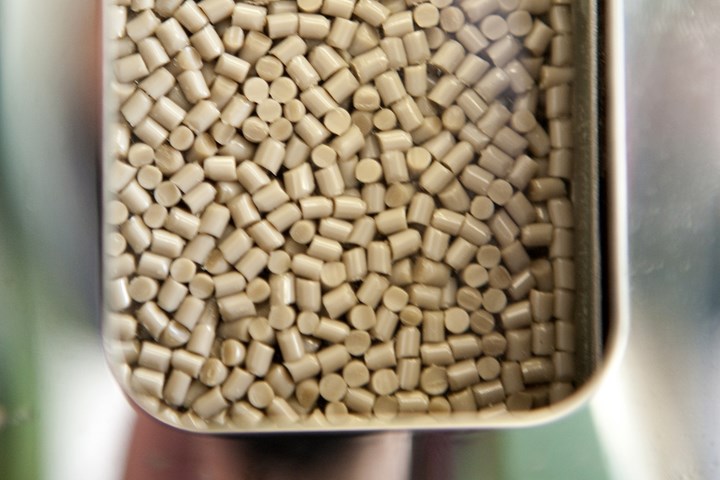High-Viscosity PEEK for Injection Molding and Extrusion
Evonik’s new Vestakeep 4500 PEEK boasts a higher crystallization rate and better flowability than the well-established Vestakeep L4000 G grade.
A high-viscosity PEEK material for injection molding and extrusion is the latest addition to the extensive range of high-performance Vestakeep PEEK products from Evonik, Parsippany, N.J. Vestakeep 4500 G reportedly exhibits high melt stiffness, which simplifies processing during extrusion. Its rapid crystallization shortens the cycle time in injection molding, and the components are easy to eject and exhibit good dimensional stability.

Evonik’s PEEK products range from low-viscosity to high-viscosity molding compounds, granules as well as powders, unreinforced as well as equipped with glass fibers and carbon fibers. Thanks to their high temperature and chemical resistance, and their high ductility, these specialty polymers can replace metal components to enable, for example, sophisticated lightweight construction applications.
The newly developed 4500 G grade complements the high-viscosity variants with a product that has a higher crystallization rate and better flowability than Vestakeep L4000 G, which is well known on the market. During processing, 4500 G also shows higher melt stiffness and better temperature resistance. Its inherent color is slightly lighter than the well-known molding compound. The combination of its properties makes 4500 G suitable for many applications.
Related Content
-
ICIS Launches: Ask ICIS Generative AI Commodities Assistant
Said to be the first of its kind, this AI assistant will enhance access to ICIS’ intelligence and insights for the energy and chemical markets.
-
The Fantasy and Reality of Raw Material Shelf Life: Part 1
Is a two-year-old hygroscopic resin kept in its original packaging still useful? Let’s try to answer that question and clear up some misconceptions.
-
What's the Allowable Moisture Content in Nylons? It Depends: Part 2
Operating within guidelines from material suppliers can produce levels of polymer degradation. Get around it with better control over either the temperature of the melt or the barrel residence time.

